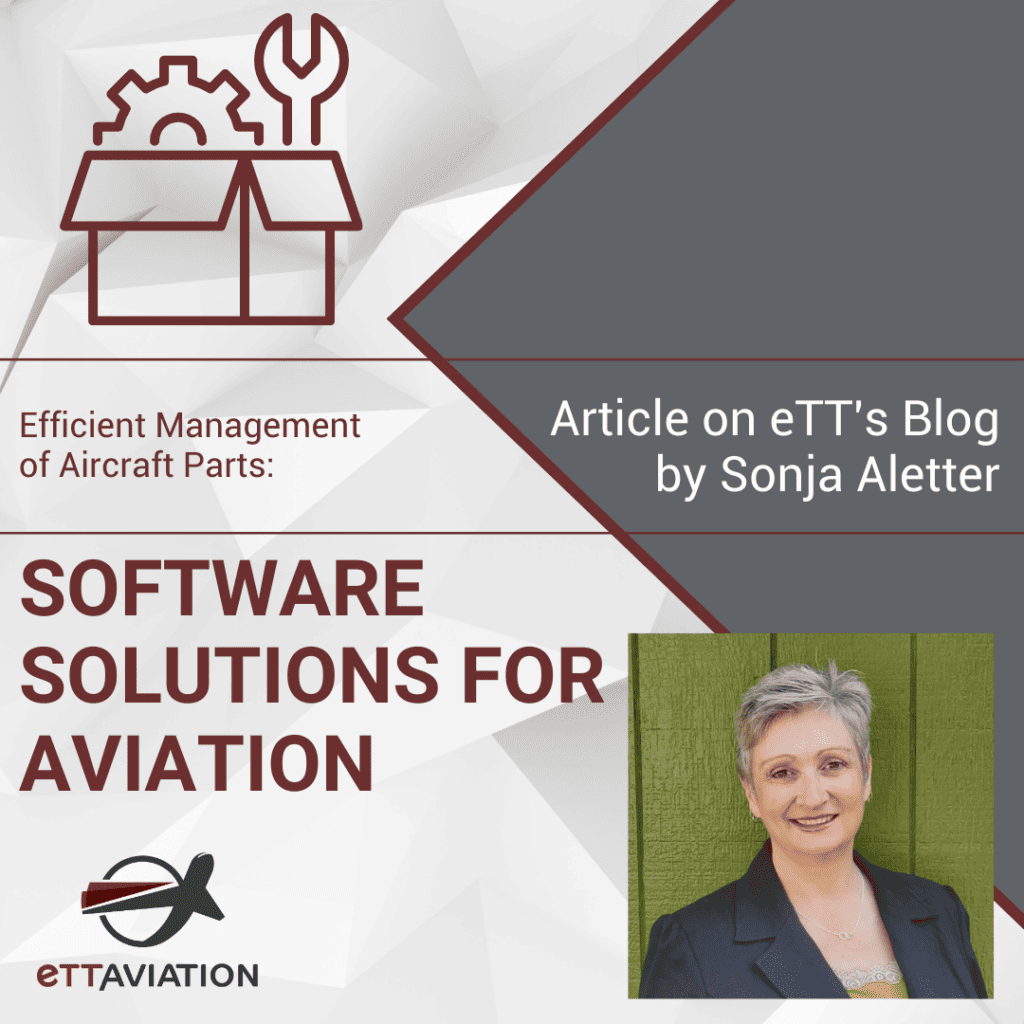By Sonja Aletter, Chief Operating Officer, eTT Aviation
In the intricate ecosystem of aviation operations, the efficient management of aircraft parts stands as a critical component of success. Every delayed flight, every unscheduled maintenance, can ripple through an airline’s operations, affecting profitability and customer satisfaction. Today, I want to delve into how advanced software solutions are revolutionizing the management of aircraft parts, ensuring that aviation businesses stay airborne and ahead.

The Complexity of Aircraft Parts Management
Managing aircraft parts is a complex ballet of logistics, regulations, and finance. Each aircraft has thousands of parts, each with its own lifecycle and regulatory requirements. Traditional methods of managing these parts – often manual, paper-based systems – are no longer feasible in today’s fast-paced and regulation-heavy aviation industry.
The challenge is multi-dimensional: ensuring parts availability without overstocking, adhering to stringent compliance mandates, optimizing repair and maintenance workflows, and doing all this in a cost-effective manner. It’s a tall order, and that’s where specialized software solutions come into play.
Software Solutions to the Rescue
Modern software solutions for aviation, particularly those specialized in inventory and maintenance management, are designed to address these challenges head-on. They provide a centralized platform where information about every part – from procurement to retirement – is stored, tracked, and managed.
- Combined Inventory Tracking and Procurement: Implementing a comprehensive software tool that integrates inventory tracking with procurement capabilities can significantly enhance an aviation company’s ability to manage their aircraft effectively. By centralizing inventory data and procurement processes within a single platform, the company gains real-time visibility into the availability of spare parts, components, and materials essential for aircraft maintenance and operations. This streamlines inventory management by automating replenishment processes, reducing stockouts, and minimizing excess inventory.
- Regulatory Compliance: With regulations continually evolving, compliance is a moving target. Aviation software keeps track of the regulatory status of each part, ensuring that only compliant parts are used. Automated documentation and traceability features simplify audits and inspections, keeping airlines on the right side of the law and avoiding costly penalties.
- Maintenance Scheduling and Tracking: By integrating with maintenance scheduling systems, aviation software ensures that parts are available when needed, streamlining maintenance operations. This integration allows for predictive maintenance, reducing aircraft downtime, and extending the life of parts by ensuring they are serviced at the optimal time.
- Cost Control and Financial Reporting: Understanding the financial implications of parts management is crucial. Advanced software solutions offer detailed financial tracking and reporting features, providing insights into costs and helping manage budgets more effectively. They transform data into actionable intelligence, allowing management to make informed decisions regarding parts procurement and maintenance strategies.
Real-World Impact and Future Prospects
The adoption of these advanced software solutions leads to tangible benefits. Reduced aircraft downtime, improved regulatory compliance, and correct inventory levels all contribute to significant cost savings and enhanced operational efficiency. Airlines can provide more reliable service, improving customer satisfaction and loyalty.
Conclusion
In conclusion, the efficient management of aircraft parts is a critical, though often overlooked, aspect of aviation operations. As the industry continues to evolve, the role of specialized software solutions in ensuring parts availability, regulatory compliance, and cost-effectiveness cannot be overstated. For aviation businesses looking to remain competitive and efficient, investing in these solutions is not just an option; it’s a necessity.
At eTT Aviation, we understand these challenges and opportunities. Our commitment is to provide solutions that not only meet today’s needs but also pave the way for a more efficient, reliable, and sustainable future in aviation.